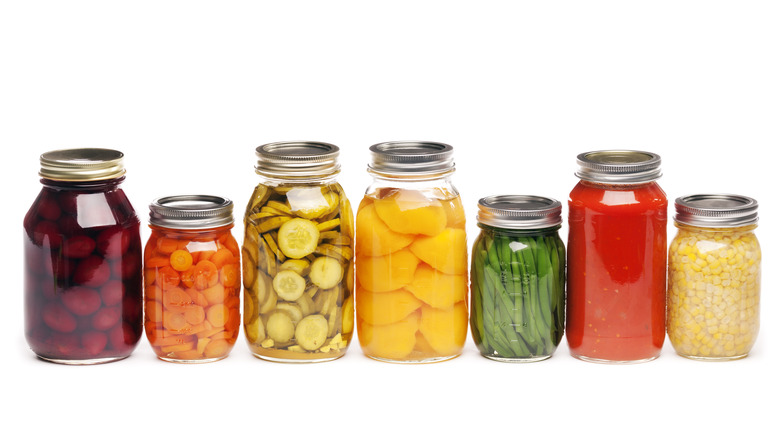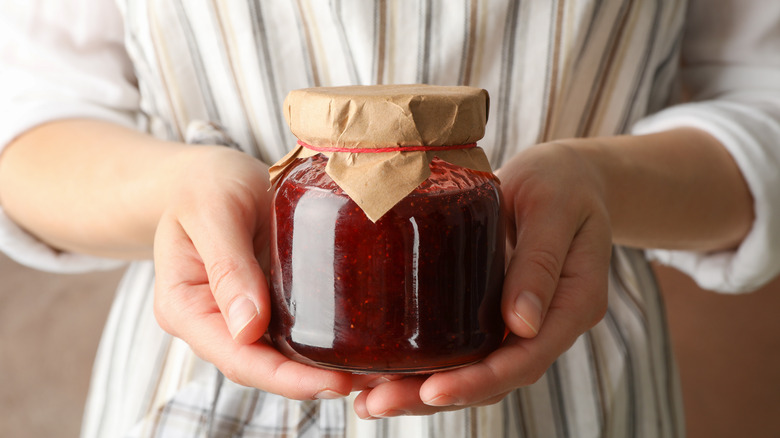The USDA's Major Issue With Open-Kettle Canned Goods
Ask anyone who loves to cook to share their favorite food memory and they're likely to recall standing on a kitchen stool alongside their grandmother learning how to peel apples for applesauce. But if your favorite memories fall into this nostalgic category, heed this warning: Some things are better left in the past. Don't panic. We're not suggesting you throw out a generations-old family recipe. We are, however, advising you to update your cooking method.
Back in the day, open-kettle canning was all the rage. It was relatively easy and widely believed to be perfectly safe for canning and preserving foods like pickles, jams, tomatoes, and of course, applesauce. The process involved bringing the food bound for canning to a full boil, pouring the hot mixture in a jar, applying a lid, and letting physics take over — as the contents of the jar cool, the lid contracts to form a seal — to securely fasten the lid to the jar.
So what's the problem? According to the USDA, open-kettle canning is rife with opportunities for contamination. This isn't a new development. The USDA identified the risks of open-kettle canning in the 1930s and has been actively warning about the dangers inherent in the process since the 1980s. Still, even experienced home canners don't necessarily understand why the process is dangerous. And others have chosen an alternate method — oven canning — that is equally as risky.
The many degrees of separation
Research shows that foods preserved via open-kettle canning and oven canning are rarely heated to a temperature sufficient to destroy dangerous mold, yeast, and bacteria before they are jarred. Beyond that, the temperature of the food canned using either method often fails to create a vacuum-packed seal strong enough to prevent infiltration by outside agents that may lead to contamination. In addition, oven canning comes with physical risks. Glass jars are prone to crack and even shatter when they are exposed to dry heat. Ball Mason Jars, the manufacturer of some of the most popular canning jars in the United States, explicitly warns that their product is not oven-safe.
So, what's a home canner to do? Fear not, there's a safe alternative that doesn't involve investing in special equipment. But there's a caveat: According to the North Carolina Cooperative Extension, it only works for highly acidic foods like jams, jellies, pickles, and fruit. Place the filled jars, with lids on top, in a bath of boiling water. Monitor the temperature of the contents to be sure it reaches between 180 and 250 degrees Fahrenheit. The minimum temperature will destroy potentially dangerous bacteria and result in a solid seal. As for canning low-acid foods like meats and vegetables with a pH of 4.6 or above, it's best to invest in a pressure canner.

